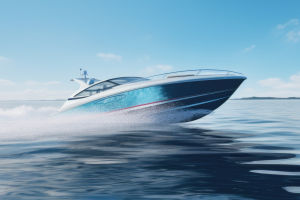Fishing boats, built for fresh and saltwater fishing, are essential tools for communities around the world.
From humble wooden rowboats to industrial trawlers, fishing boats come in many shapes and sizes, tailored to the specific waters and fish they target.
Types of Fishing Boats
1. Dinghies and Canoes: The simplest form of fishing boats, dinghies, and canoes are typically used in rivers, lakes, and near coastal waters. These small boats are often powered by paddles or small outboard motors, making them ideal for recreational fishing or small-scale commercial activities. Lightweight and easy to maneuver, they are perfect for shallow waters where larger vessels cannot reach.
2. Trawlers: Trawlers are large boats designed for commercial fishing in deeper waters. These vessels use large nets, called trawls, which are dragged through the water or along the sea floor to catch fish such as cod, haddock, and shrimp. Trawlers are equipped with advanced navigation and fish-finding equipment, and they can stay at sea for weeks or even months, storing their catch in refrigerated holds.
3. Longliners: Longlining involves setting out a long line with baited hooks at intervals, targeting species like tuna, swordfish, and halibut. Longline fishing boats, or longliners, can vary in size from small coastal vessels to large ships operating in the open ocean. These boats are equipped with specialized winches to handle the long lines.
4. Gillnetters: Gillnetters use vertical nets, called gillnets, that trap fish by their gills as they try to swim through. These boats are typically used in nearshore and shallow waters to target species like salmon, trout, and mackerel. Gillnetters come in various sizes, from small boats for river and lake fishing to larger vessels for coastal and offshore waters.
The Best Family Fishing Boat? Merry Fisher Marlin 895 Offshore Review
Video By POWERBOAT AND RIB
5. Purse Seiners: Purse seiners are boats that use large circular nets, called purse seines, to encircle schools of fish like sardines, anchovies, and tuna. Once the fish are surrounded, the bottom of the net is pulled together like a drawstring purse, trapping the fish inside. These vessels are commonly used in commercial fishing.
Importance of Fishing Boats
1. Sustaining Livelihoods: Fishing boats are a vital source of income and employment for millions of people worldwide. Coastal communities, in particular, rely heavily on fishing for their livelihoods, with boats enabling them to access fish stocks that are not reachable from the shore.
2. Food Security: Fishing boats play a crucial role in ensuring global food security. They provide a steady supply of fish, which is a significant source of protein and essential nutrients for billions of people. Whether it's a small local boat or a large commercial trawler, fishing vessels are key players in the food supply chain.
3. Economic Impact: The fishing industry is a significant contributor to the global economy. From small-scale local fisheries to large industrial operations, fishing boats support a wide range of industries. They also generate revenue through exports and support allied sectors like boat building and maintenance.
Challenges Faced by Fishing Boats
1. Overfishing: One of the most significant challenges facing the fishing industry is overfishing. As fishing boats become more advanced and efficient, they can catch larger quantities of fish, putting immense pressure on fish populations. Sustainable practices and regulations are essential to prevent the depletion of marine resources.
2. Weather and Safety: Fishing is one of the most dangerous professions in the world. Fishing boats often operate in harsh weather conditions, facing high winds, rough seas, and the risk of collisions. Ensuring the safety of crews requires well-maintained vessels, proper training, and strict adherence to safety protocols.
Technological Advancements in Fishing Boats
Modern fishing boats are equipped with state-of-the-art technology to improve efficiency, safety, and sustainability:
1. Fish-Finding Equipment: Advanced sonar and GPS systems help fishing boats locate fish schools with precision, reducing the time and fuel needed to find their catch.
2. Automated Systems: Automation in fishing boats, such as mechanical net haulers, winches, and processing equipment, reduces labor requirements and increases efficiency, allowing boats to handle larger catches with smaller crews.
3. Eco-Friendly Design: Some newer fishing boats are designed with eco-friendly features, such as fuel-efficient engines and low-impact fishing gear, to minimize their environmental footprint.
Fishing boats are much more than mere vessels; they are lifelines that support communities, feed populations, and drive economies worldwide. As technology advances and awareness of sustainability grows, the role of fishing boats is evolving to meet the challenges of the modern world. Whether you're a small-scale fisher or a part of a large commercial operation, fishing boats remain at the heart of one of the oldest and most essential human activities.


